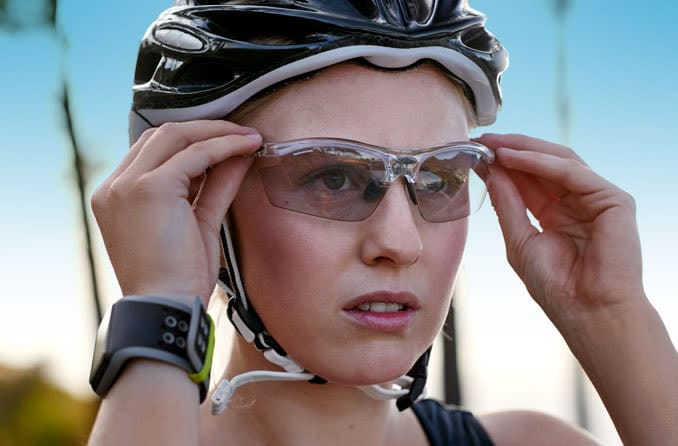Why Eye Safety in Sports Is Non-Negotiable

Eye safety in sports is a paramount concern due to the high risk of eye injuries that athletes face. This article aims to explore the importance of eye protection in sports. It will also discuss common eye injuries that occur, strategies for prevention, choosing appropriate eyewear, and the role of coaches and parents in promoting eye safety.
By adhering to an academic writing style devoid of personal pronouns, this article will provide an objective and impersonal analysis of why eye safety in sports is non-negotiable.
Key Takeaways
- Eye protection in sports is essential to prevent potential injuries and maintain visual health.
- Adherence to eye safety regulations is crucial to minimize the risk of eye injuries in athletes.
- Common eye injuries in sports can range from minor irritations to permanent vision loss.
- Implementing appropriate protective equipment and educating athletes on proper techniques are key strategies in preventing eye injuries in sports.
The Importance of Eye Protection in Sports
The significance of eye protection in sports lies in its ability to prevent potential injuries and maintain visual health. Eye safety regulations are put in place to ensure that athletes are adequately protected during sporting activities. These regulations require athletes to wear appropriate eye protection, such as goggles or face shields, depending on the nature of the sport.
Without proper eye protection, athletes are at a higher risk of sustaining eye injuries, which can have a significant impact on their performance. Eye injuries can range from minor irritations to more severe damage, including corneal abrasions, fractures, or even permanent vision loss. Such injuries can impede an athlete’s ability to perform optimally, affecting their depth perception, hand-eye coordination, and overall athletic performance.
Therefore, adherence to eye safety regulations and the use of proper eye protection in sports is crucial to minimize the risk of eye injuries and maintain optimal visual health.
Common Eye Injuries in Sports
Common eye injuries in athletic activities frequently occur due to the high risk of impact and contact with various objects or players. These injuries can have significant consequences for athletes, both in terms of their immediate well-being and their long-term athletic performance.
Here are three common types of eye injuries in sports:
- Corneal Abrasions: These occur when the outermost layer of the cornea is scratched or scraped, often from a finger or object making direct contact with the eye. Treatment options for corneal abrasions include antibiotic eye drops or ointments to prevent infection and promote healing.
- Orbital Fractures: These are fractures of the bones surrounding the eye socket and can result from a direct blow to the face. Treatment options for orbital fractures may include surgery to repair the bone and restore eye function.
- Retinal Detachment: This occurs when the thin layer of tissue at the back of the eye becomes separated from the underlying layers. Retinal detachment often requires immediate surgical intervention to prevent permanent vision loss.
The impact of these eye injuries on athletic performance can be significant. Impaired vision can affect an athlete’s ability to track moving objects, judge distances accurately, and react quickly to changes in their environment. It is crucial for athletes to prioritize eye safety and seek appropriate treatment for any eye injuries sustained during sports activities.
Strategies for Preventing Eye Injuries in Sports
Effective strategies for preventing eye injuries in athletic activities involve implementing appropriate protective equipment, educating athletes on proper techniques, and promoting awareness of potential risks. Eye safety equipment such as goggles, face shields, and helmets with visors are crucial in protecting the eyes from direct impact or penetration by objects. These protective gears should be designed to meet specific sport requirements and standards. Additionally, educating athletes on proper techniques, such as keeping their eyes on the ball and avoiding contact with other players, can significantly reduce the risk of eye injuries. Promoting awareness of potential risks through educational campaigns, posters, and safety guidelines can also contribute to injury prevention. The table below illustrates some commonly used eye safety equipment and eye injury prevention techniques in different sports.
| Sport | Eye Safety Equipment | Injury Prevention Techniques |
|---|---|---|
| Basketball | Goggles, face shields | Keeping eyes on the ball, avoiding contact with other players |
| Hockey | Visors, face masks | Proper stick handling technique, avoiding high sticks |
| Baseball/Softball | Batting helmets with face guards | Avoiding close contact with the ball, using proper batting technique |
Choosing the Right Eyewear for Sports
One crucial aspect to consider when selecting appropriate eyewear for athletic activities is ensuring that it meets the specific requirements and standards of the sport. This is essential to provide adequate protection for the eyes and reduce the risk of injury.
There are various protective eyewear options available that cater to different sports and their specific needs. These options include goggles, face shields, and visors, each designed to offer particular benefits and coverage.
Additionally, impact resistance technology is a key feature to look for in eyewear. This technology enhances the durability of the eyewear and helps it withstand high-velocity impacts. It is important to choose eyewear that offers sufficient impact resistance to protect against potential hazards that may occur during sports activities.
The Role of Coaches and Parents in Promoting Eye Safety in Sports
Coaches and parents play a crucial role in promoting the use of appropriate eyewear for athletes participating in sports activities.
Coaches’ responsibilities include educating their athletes about the importance of eye safety and enforcing the use of protective eyewear during training and competitions. They should also ensure that athletes have access to high-quality eyewear that fits properly and meets the necessary safety standards. Additionally, coaches should lead by example and wear appropriate eyewear themselves.
Parents’ involvement is equally important in promoting eye safety. They should support and reinforce the coach’s efforts by encouraging their children to wear protective eyewear and providing them with the necessary resources. Parents can also advocate for eye safety within their communities and schools, creating awareness among other parents and coaches.
Frequently Asked Questions
Are There Any Specific Sports That Pose a Higher Risk of Eye Injuries?
Certain sports have a higher risk of causing eye injuries, such as basketball, baseball, and racquet sports. Common signs of eye injuries in athletes include pain, redness, blurred vision, and the presence of blood in the eye.
How Can Athletes Recognize the Signs of a Potential Eye Injury?
Recognizing potential eye injuries in athletes is crucial for effective eye injury prevention strategies. Athletes should be trained to identify signs such as blurred vision, double vision, or eye pain, which may indicate a potential eye injury.
Are There Any Alternative Measures to Protect the Eyes in Sports, Other Than Wearing Eyewear?
Non eyewear alternatives for eye protection in sports have been developed through advancements in technology. These advancements include face shields, protective goggles, and helmets with built-in visors, which offer additional protection against potential eye injuries.
What Should Athletes Do if They Experience an Eye Injury During a Game or Practice?
In the context of eye injury prevention and treatment, athletes should follow appropriate protocols and seek immediate medical attention if they experience an eye injury during a game or practice.
Are There Any Long-Term Consequences or Complications Associated With Eye Injuries in Sports?
Long-term consequences and complications can arise from eye injuries sustained in sports. These injuries can lead to vision loss, corneal scarring, retinal detachment, and other serious conditions that may require surgical intervention or long-term medical treatment.









